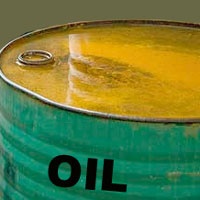|
 London: Dismissing fears of peak oil, the International Energy Agency has however warned that the world runs a risk of failing to match supply and demand. Releasing the full version of its World Energy Outlook for 2008 today, the IEA has highlighted obstacles to accessing new fields and increasing supply. London: Dismissing fears of peak oil, the International Energy Agency has however warned that the world runs a risk of failing to match supply and demand. Releasing the full version of its World Energy Outlook for 2008 today, the IEA has highlighted obstacles to accessing new fields and increasing supply.
It had released an executive summary of its latest report last week. "Some 30 million barrels per day of new capacity is needed by 2015," said the IEA. ''There remains a real risk that under-investment will cause an oil-supply crunch in that time frame." It estimates that
the world would need investments of more than $26 trillion in the next 20 years to ensure adequate energy supplies. This is an increase of more than $4 trillion from estimates in its 2007 World Energy Outlook. The report warns that though upstream investment in oil had risen marginally, much of it was due to high costs involved in operations as cheaper reserves are off-limits to international oil companies. "Today, most capital goes to exploring for and developing high-cost reserves, partly because of limitations on international oil company access to the cheapest resources,"the report said. It also warned that the gap between new capacity being created and the supply required to keep pace with demand would widen sharply after 2010. The report projects a rise in world oil supply to 106 million barrels per day (bpd) in 2030, up from 84 million bpd in 2007. According to the IEA, most of the increase in supply would come from OPEC members whose share of world oil output would rise to 51 per cent in 2030, up from 44 per cent in 2007. It said production had already peaked in most countries and would peak in most others before 2030. Assessing decline rates for oil fields that have passed production peak, the IEA looked at 800 of the world's oilfields and said it expects the average rate of decline to increase to 8.6 per cent in 2030, from about 6.7 per cent now. Touching on the issue of prices, the report said the high cost of production, as producers struggled to match supply and demand, may ensure that consumers would pay an average of $100 a barrel for oil over the next seven years and more beyond that. "Pronounced short-term swings in prices are likely to remain the norm," the IEA said. "The sudden drop in oil prices in August and early September 2008 - in the absence of any obvious major shift in demand or supply - lends support to the argument that financial investors have been playing a significant role in amplifying the impact of tighter market fundamentals on prices," the report said. On an average, world demand would grow1.6 per cent per year, with China and India accounting for just over half the increase, the report said.
|